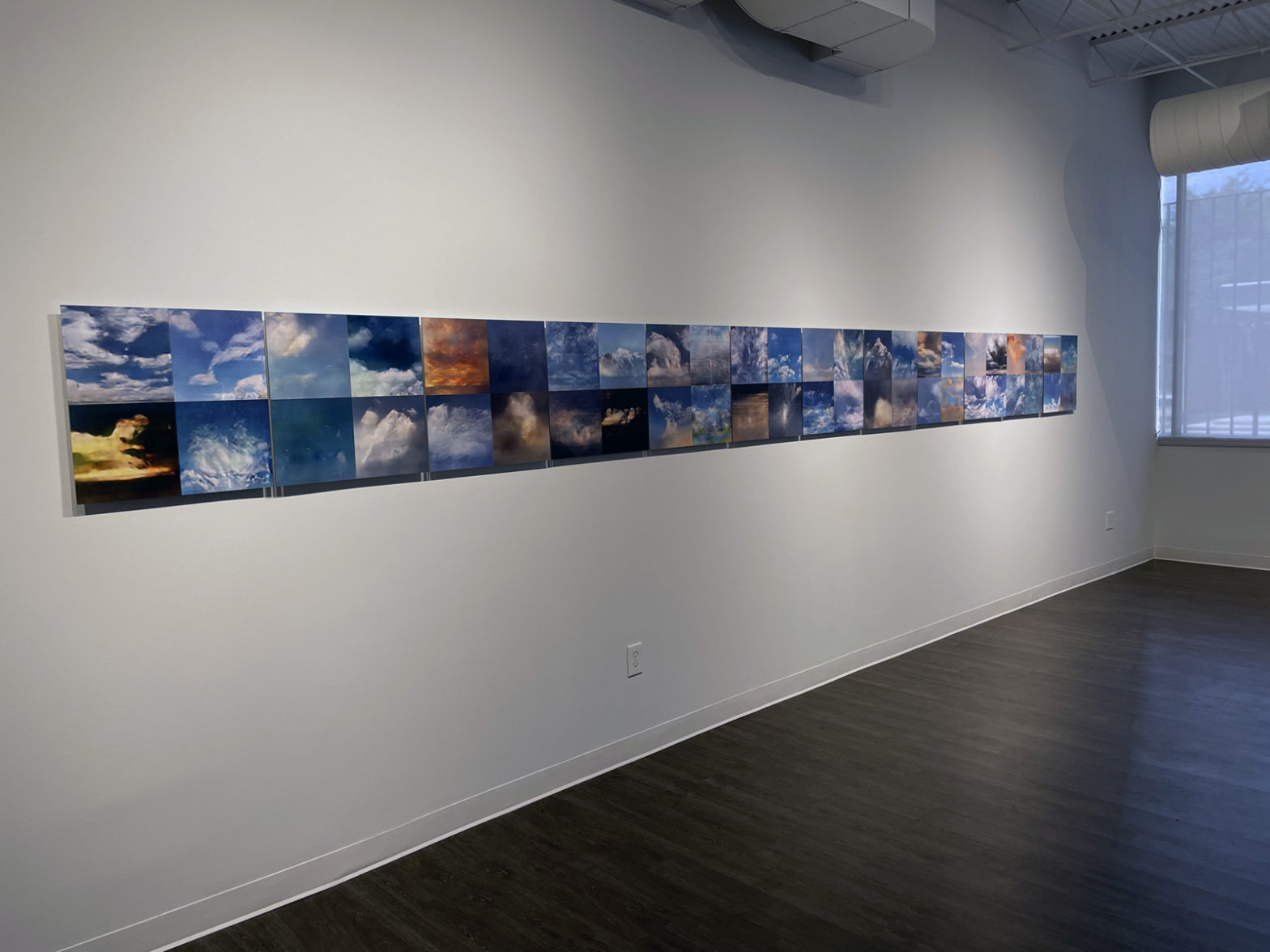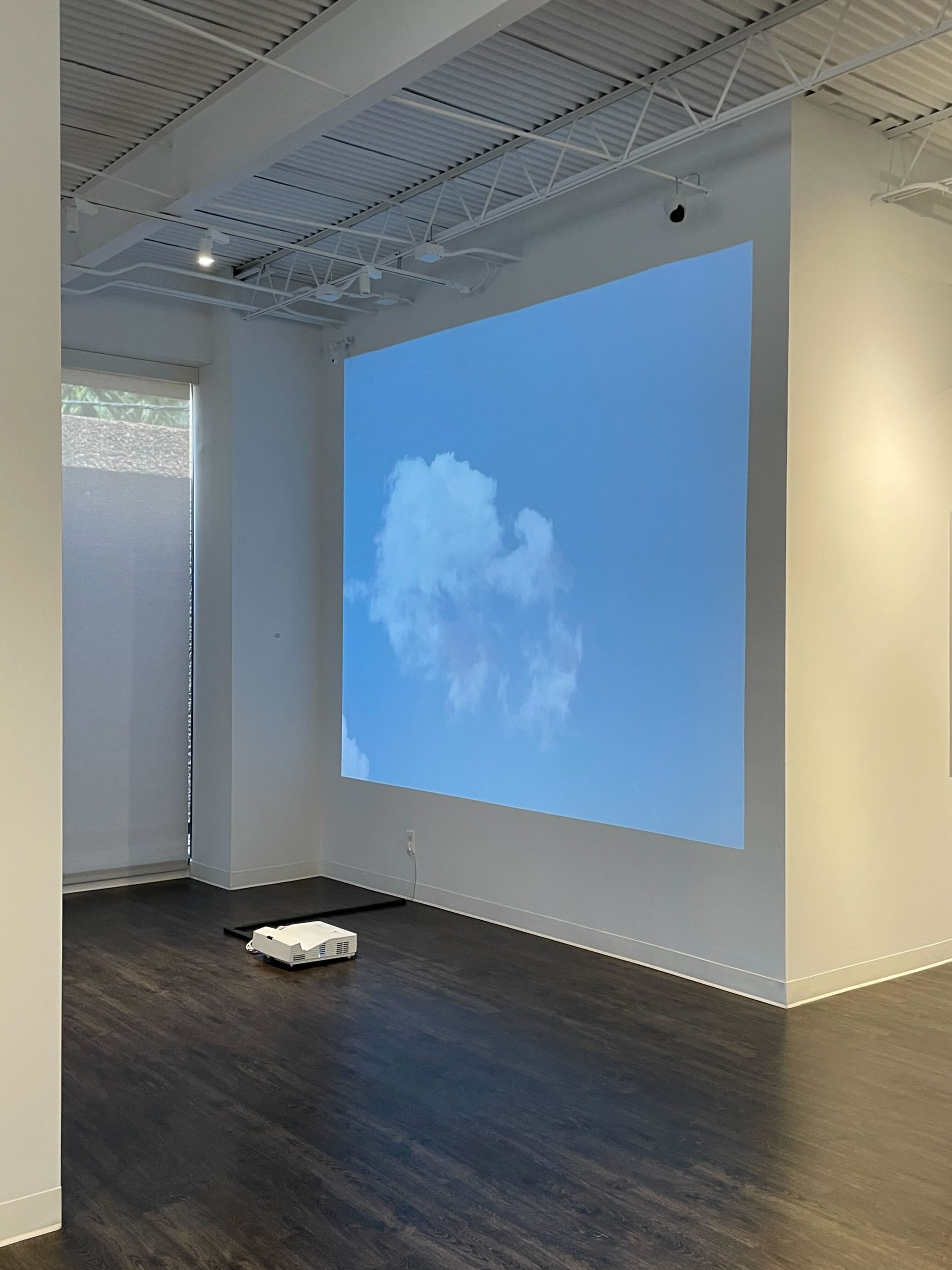
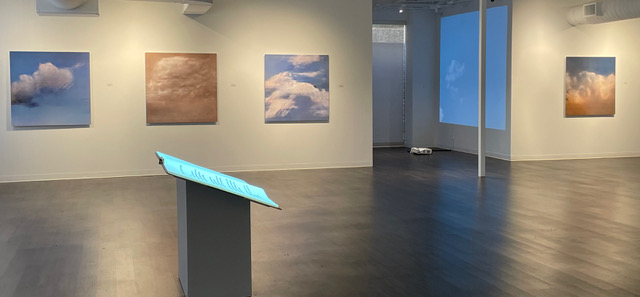

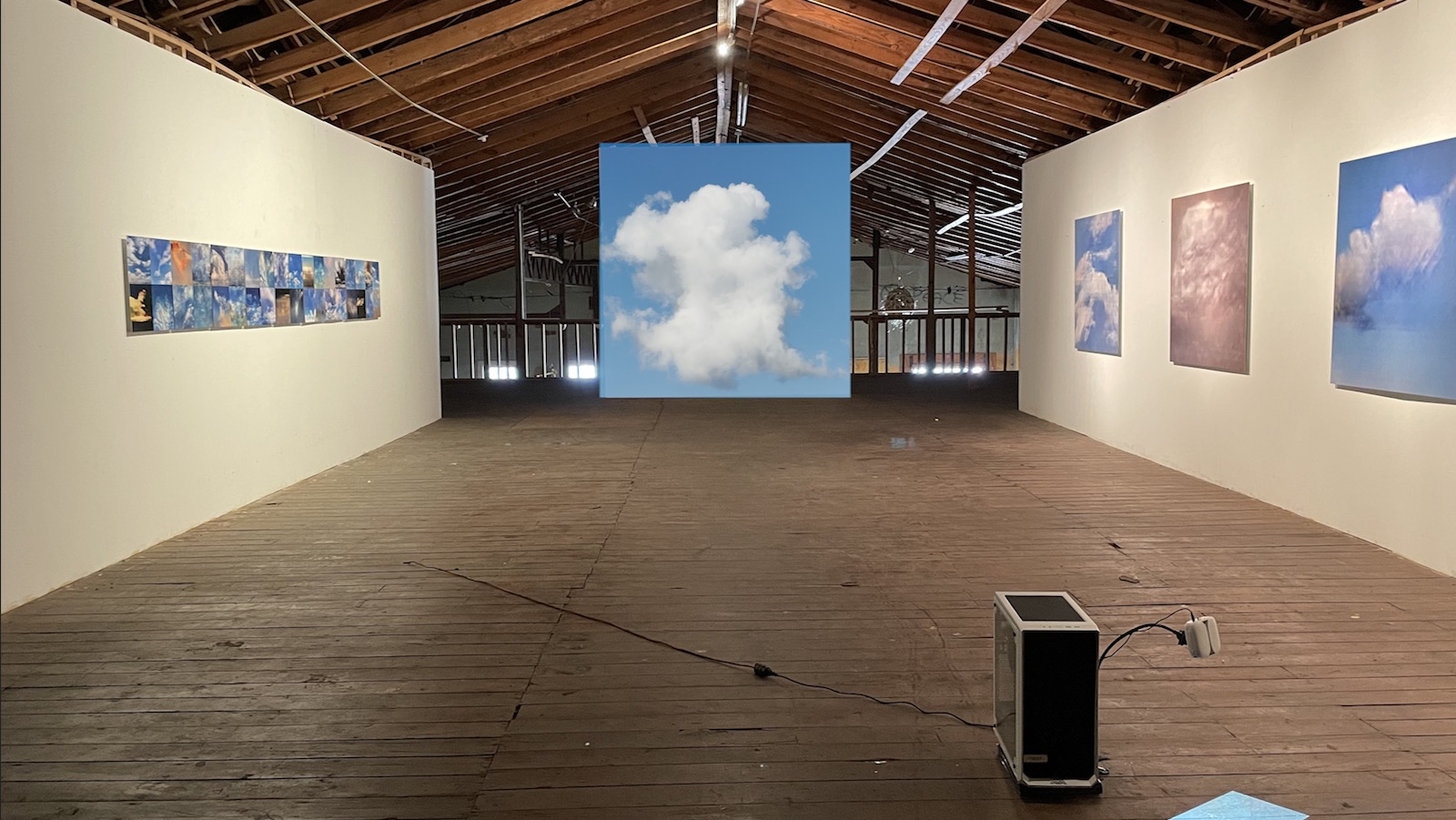
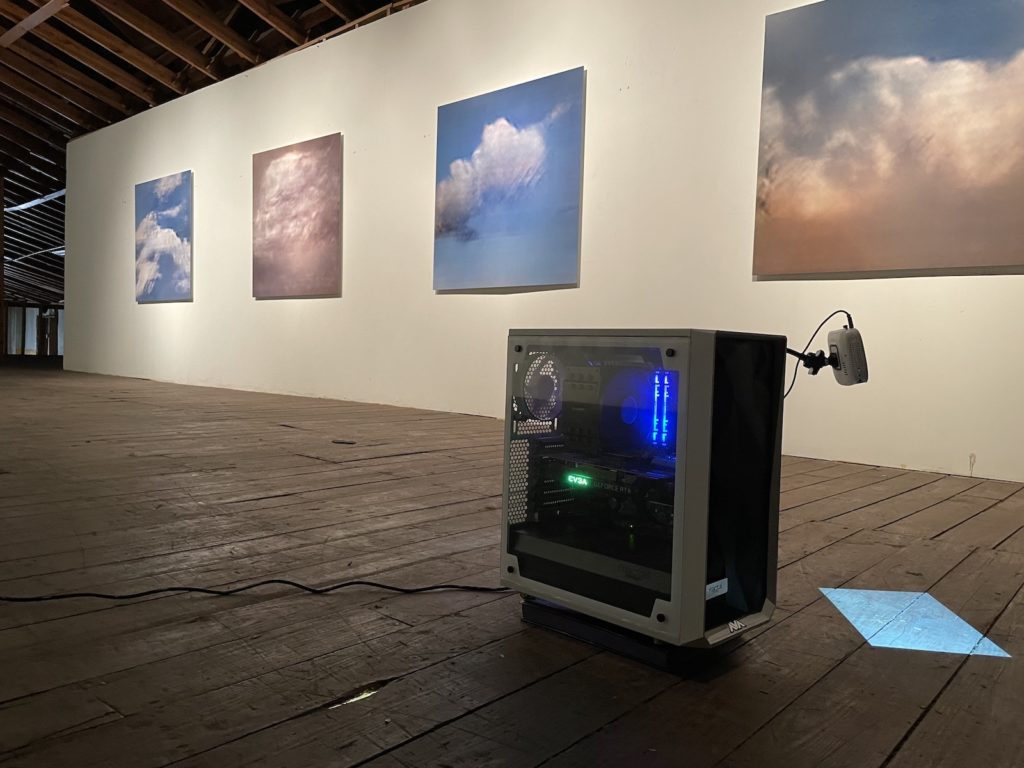
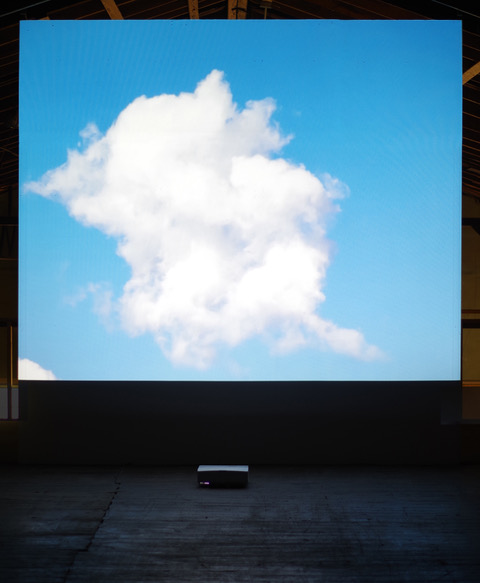
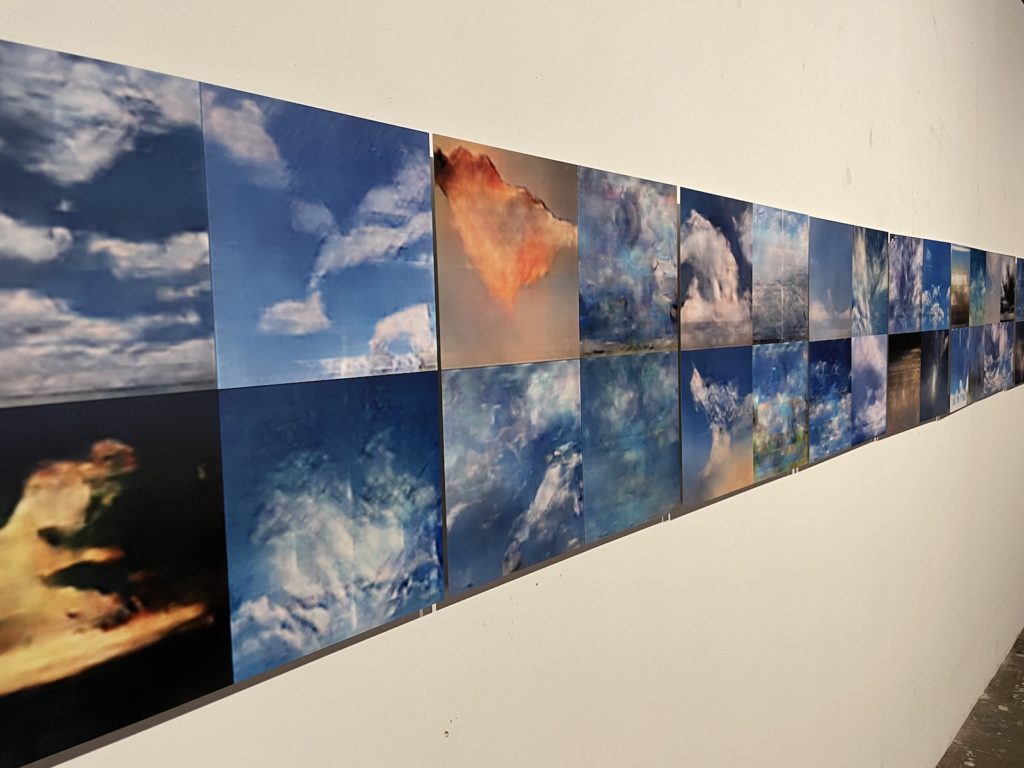


[Grace:AI] – Daydreams
Custom software, Ubuntu system, Projectors, Video, Dye sublimation prints on aluminum
(20″ x 20″, 48″ x 48″)
121.92cm x 121.92cm
2021-22
What happens when a machine learning algorithm for image creation is trained to “see” only on images of the work created by women artists? What would happen if this AI were to be lost in reverie?
In Daydreams, [Grace:AI]– an AI trained on the paintings created by global women artists– looks the sky above, the rich clouds dancing, furling, hovering, lifted by lightness or weighted down with a future rain. She then creates her own versions of clouds.
Each image produced by [Grace:AI] is unique. The system employs a Deep Convolutional General Adversarial Network and is trained to “see” from a dataset I created that contains tens of thousands of paintings and drawings by women artists from around the world. This training data is, in effect, an incomplete yet vast, history of global women’s art. The artists I have found as her ‘teachers’ are outspoken individuals from countries ranging from Korea to Greece to Argentina to Nigeria, artists who worked or work in the male-dominated art world. There is no global comprehensive resource for women’s art, and most museum collections have woefully unequal gender representation.
I’ve been given access to some collections particularly noting women’s art, including the National Museum of Women in the Arts, the University of Indiana, and the Met in New York. To create such a massive digital dataset of women’s artwork is not trivial. Many art history databases do not include gender or sex as a searchable aspect of the work. Thus, gathering the images has required scraping web resources artist by artist, typing in their name and culling images of women’s artwork (as opposed to photographs of women artists, or images made by male artists of them, which populate searches for women artists).
Watch [Grace:AI] generate clouds at the Computational Creativity exhibition curated by Lilla Lo Curto and Bill Outcault 14-15 September 2021 https://computationalcreativity.net/iccc21/art-exhibition/
[Grace:AI] – Daydreams is the second phase of the AI’s image making themes. [Grace:AI] – Origin Story was the first phase of the work. The AI produced images from her “origin story” of sorts by examining thousands of images of Mary Shelley’s monster, classic ‘Frankensteins’ gathered from online databases and image banks, rendering a series of original images of her “father figure” as archival dye sublimation prints on aluminum. [Grace:AI] – Origin Story (Frankenstein) had its American premiere in “A Question of Intelligence: AI and the Future of Humanity” at Parsons, NYC curated by Christiane Paul in 2020.
This project was initially supported by the Leslie Center for the Humanities at Dartmouth College and a Scholarly Advancement Award.
Exhibitions
- “Hope is a thing with feathers” solo exhibition, Nancy Littlejohn Fine Art, Houston TX, 13 May – 3 July 2022. Exhibition Catalog
- “Much of a muchness, blurring the lines: ICCC’21 Art Exhibition” International Conference on Computational Creativity, Virtual Exhibition, 14 -15 September 2021
Press
- Glentzer, Molly. “AI Meets Emily Dickinson in Mary Flanagan exhibit,” Houston Chronicle, 20 June 2022
Thanks to: Jared Segal, Spring Yu, Sukdith Punjasthitkul, Danielle Taylor, Max Seidman, Griffin Editions, Ken King, Joseph Havel, The Leslie Center for the Humanities & Dean of the Faculty, Dartmouth College, Neme Arts Center, Sheila C. Johnson Design Center at Parsons, Christiane Paul, Yiannis Colakides, Marc Garrett.
